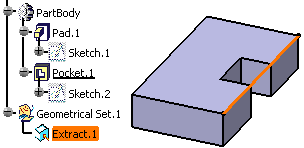Create a Pocket at a Given Location Inside the Body
You can create a pocket at a given location inside the body.
This first scenario provides a basic example of the absorption rule
prevailing in a hybrid design environment.
Create a new part ensuring that Enable hybrid design and Create a geometrical set options
are on. For detailed information on these options, see the
Customizing section of this guide.
Create a pad, a hole then a fillet on the pad in PartBody set as
the current body.
In the Generative Shape Design workbench create an intersection
between the pad and plane xy.
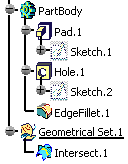
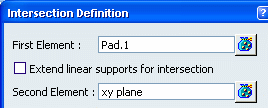
Create a pocket.
If now you decide to edit your Intersect feature, you will see that
the pocket which was created just after the pad is to be taken into
consideration.
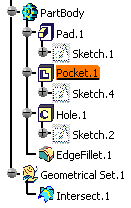
Hybrid Design Environment:
When editing Intersect.1, you can see that the initial
specifications have been replaced: Pad.1 initially used to compute
the intersection is no longer taken into consideration. Because we
work in a hybrid design environment, Pad.1 has been absorbed by
Pocket.1. As a consequence, Pocket.1 is a specification of
Intersect.1.
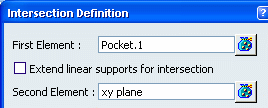
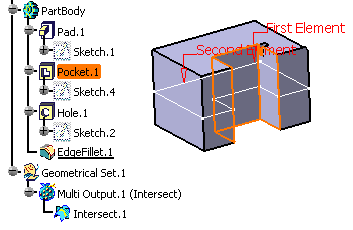
Non-hybrid Design Environment:
When editing Intersect.1, the initial specifications remain the
same: Pad.1 initially used to compute the intersection is no still
taken into consideration.

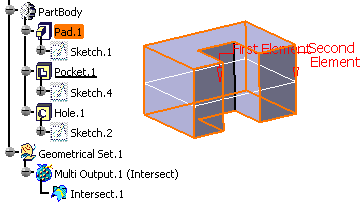

Create a Pocket As the Last Feature of a Body
You can create a pocket as the last feature of a body.
This scenario shows you how the automatic replace mechanism affects
the creation of a feature.
Create a new part ensuring that Enable hybrid design and Create a geometrical set options
are on.
Create a pad in PartBody set as the current body.
Set Geometrical Set1 as current.
In the Generative Shape Design workbench extract an edge of the
pad.
Back in the Part Design workbench, create a pocket using the side
face as shown below:
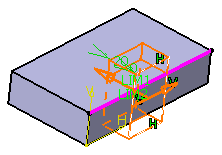
Once the pocket is created, you can note that the extracted edge is
trimmed and shortened by the pocket. Conversely, in a non-hybrid
design environment, the extracted edge would not be affected by the
pocket creation.
Hybrid Design Environment:
The extracted line is no longer continuous.
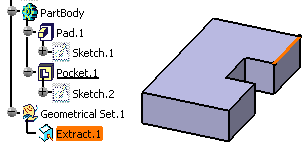
Non-hybrid Design Environment:
The extracted line remains continuous.
